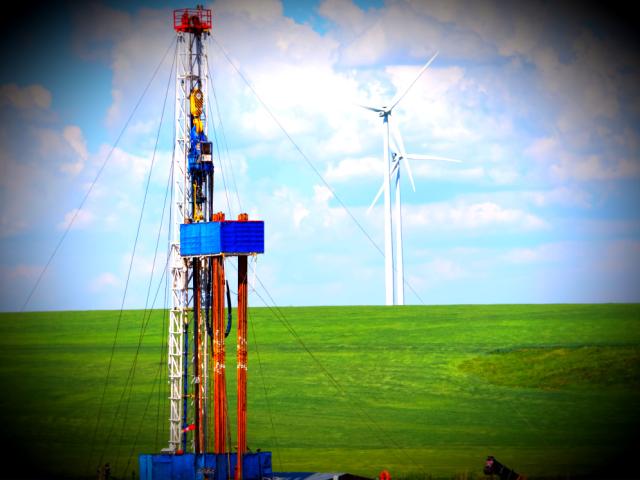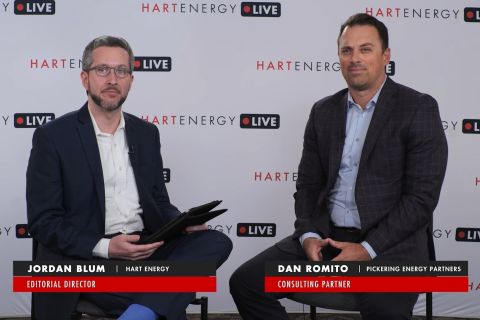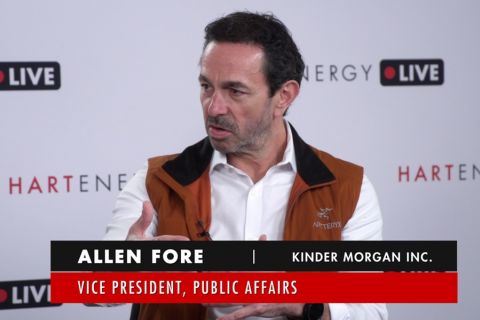
(Source: Shutterstock.com)
[Editor's note: A version of this story appears in the November 2020 issue of Oil and Gas Investor magazine. Subscribe to the magazine here.]
It’s happening. No matter who sits in the Oval Office, no matter what kind of new state or federal policies emerge or what courts uphold, the great energy transition promises to be a long and contentious road. Some industry players are not sitting by gnashing their teeth as the world discusses reducing fossil fuel use. Instead, they are planning to go on a low-carb diet. No more potatoes, much more solar power.
Oil and gas will continue to be the backbone of energy use for some time to come, but decarbonization is fast becoming the buzzword of the 2020s, and it takes several forms, most significantly in the automobile world. To the dismay of people in Detroit or Stuttgart, or at the Toyota factory in Plano outside Dallas, California Gov. Gavin Newsom, who presides over the largest automobile market in the U.S., has declared no more new cars with traditional internal combustion engines will be sold in the state after 2035. Legacy cars already registered by that date can continue to clog the freeways. Still, it will take a superhuman effort to get millions of those old cars off the road over time and to convince consumers to change their buying preferences.
Mexico City, Paris, Madrid and Athens have announced similar bans and the U.K. has announced no new gasoline or diesel vehicles from 2030. Cars must be emissions- free. Zero is the new hero. If someone can figure out how to make an emissions-free internal combustion engine powered by a fossil fuel, that’s Nobel Prize material. We’re working on it: some 187 U.S. universities have research underway looking to develop new energy technologies, according to the American Energy Society, including in Austin and Houston.
Investors are working on it too. Here in the U.S., two special purpose acquisition companies (SPACs) debuted in October with decarbonization in mind, and both were headed by people very familiar with traditional oil and gas investing. Riverstone Holdings LLC, a longtime investor in oil and gas themes such as offshore Guff of Mexico, took public on Nasdaq a SPAC called Decarbonization Plus Acquisition Corp. with 20 million units (stock and warrants) valued at $10 per. Turns out the company has a 15-year franchise in low-carbon investing with some $5 billion deployed so far.
“We believe decarbonization will be a multidecade investment megatrend …,” the company said in a statement. “Significant pools of capital are beginning to form, and investor interest will be redirected towards these critical and innovative initiatives well into the future,” said Riverstone chairman Robert Tichio.
The point of the IPO is to “decarb” the energy, agriculture, industrial or transportation sectors by acquiring relevant companies. (The IPO’s new CEO is Erik Anderson, who also happens to be the executive chairman of Topgolf Entertainment Group.) Will Riverstone offer innovative decarb companies a mulligan to offset the stumbling blocks they’ll encounter along the way to a new kind of bottom line?
Also in October, the Rice brothers behind EQT Corp. took public Rice Acquisition Corp. on the New York Stock Exchange, a SPAC with 21.5 million units at $10 per. “The company’s efforts to identify a prospective target business will not be limited to a particular industry, although it intends to focus its search … in the broadly defined energy transition or sustainability arena,” a Rice statement said.
Investors will go where the money is, where they think they’ve spotted an emerging opportunity, and we know they are often intrigued by the next new thing. Getting in on the ground floor and all that.
But what is dramatic is how much the majors and integrateds vow to get involved in a low-carbon diet as well, in order to get to net zero emissions for their production—and for the end users of their products. Seven of the biggest oils have committed to net zero between 2040 and 2050. In September BP became the latest to outline its new strategy.
Under the plan, the company’s hydrocarbon production will be flat to 2025, and by 2030 its volumes will supposedly be 40% below the 2019 level. Spending on low-carbon initiatives and renewables will soar. What a stunning goal, to change such a large and historic enterprise to this degree. It remains to be seen how much can actually be achieved.
“Until at least 2023, we will be evaluating BP like other integrateds,” said Pavel Molchanov, an E&P and alternative energy analyst for Raymond James. “This will still be an oil stock for the foreseeable future, but we are fans of the energy transition strategy.”
There are a few truths here: The world needs to figure out how to reduce pollution, it needs to figure out how to provide clean, affordable energy to everyone and it needs to preserve the traditional oil and gas industry so that it can continue to provide the energy we need. “For the record, our view is that oil demand has not yet peaked,” Molchanov said.
Recommended Reading
From Satellites to Regulators, Everyone is Snooping on Oil, Gas
2024-04-10 - From methane taxes to an environmental group’s satellite trained on oil and gas emissions, producers face intense scrutiny, even if the watchers aren’t necessarily interested in solving the problem.
EQT’s Toby Rice: US NatGas is a Global ‘Decarbonizing Force’
2024-03-21 - The shale revolution has unlocked an amazing resource but it is far from reaching full potential as a lot more opportunities exist, EQT Corp. President and CEO Toby Rice said in a plenary session during CERAWeek by S&P Global.
Exclusive: Dan Romito Urges Methane Mitigation Game Plan
2024-04-08 - Dan Romito, the consulting partner at Pickering Energy Partners, says evading mitigation responsibility is "naive" as methane detection technology and regulation are focusing on oil and gas companies, in this Hart Energy Exclusive interview.
Kinder Morgan Exec: Building Pipelines ‘Challenging, but Manageable’
2024-04-05 - Allen Fore, vice president of public affairs for Kinder Morgan, said building anything, from a new road to an ice cream shop, can be tough but dealing with stakeholders up front can move projects along.
CEO: Linde Not Affected by Latest US Green Subsidies Package Updates
2024-02-07 - Linde CEO Sanjiv Lamba on Feb. 6 said recent updates to U.S. Inflation Reduction Act subsidies for clean energy projects will not affect the company's current projects in the United States.




